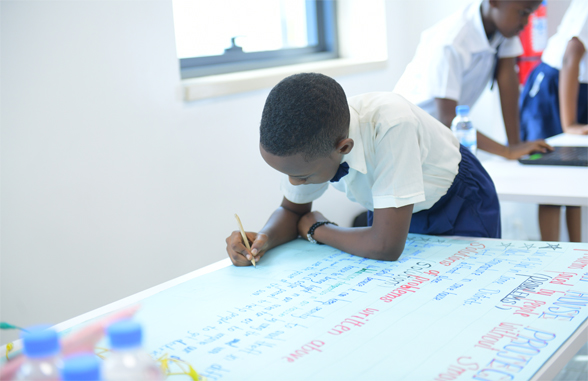Design thinking
Children learn about problem solving as a process: Empathise, Define the problem and Prototyping solution.
Introduction
Most educational systems were founded in a time when “learning” meant “rote memorization.” Today, however, we live in an exponentially changing world in which success demands creativity and innovation. Simple facts are available at the click of a button but connecting ideas to draw new conclusions in not so easy. Unfortunately, innovation is still not a valued learning objective in most schools today. Increasingly, we see the design process being used for adults, but where is the design process for children?
The next generation will need to be more and more comfortable with problems of dizzying complexity. And design thinking can teach them that.
We designed this course to get children thinking like problem solvers. We do this using three ingredients: New technologies to excite and inspire, the fictional story to make things fun and the framework of the design process to provide structure. Our education initiatives adapt the design thinking model to children using design thinking process:
Course overview
Prerequisites & requirements
- No prerequisites skills required Prerequisites
- No material required Required material
- 7-13 years old Age group
Design thinking for children course outcomes
Our ultimate goal is to expand the social skills, confidence, academic knowledge, and problem-solving skills of the next generation.

